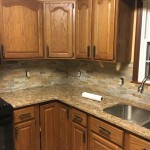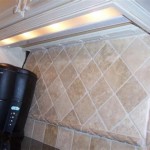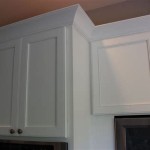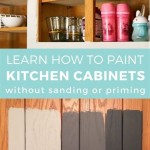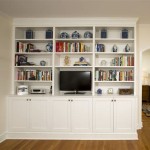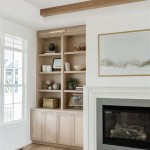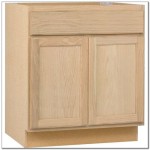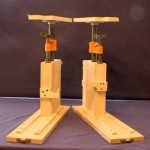What Are The Parts Of A Kitchen Cabinet Called In England?
Understanding the terminology for kitchen cabinet components is crucial for anyone undertaking a kitchen renovation, designing a new space, or simply needing to communicate effectively with cabinet makers or suppliers in England. While some terms are universally understood, variations exist, and knowing the specific English terms can prevent misunderstandings and ensure accuracy in ordering and installation.
A kitchen cabinet, in its most basic form, is a box-like structure designed to store items within a kitchen. This structure is comprised of several distinct parts, each with a specific function and often a specific name. These names can differ slightly depending on the region and the specific tradesperson involved, but the core components remain consistent.
The following sections break down the common terms used in England for the different elements of a kitchen cabinet, covering both wall and base units, and highlighting any regional variations where they exist. This detailed explanation will enable a clearer understanding of kitchen cabinet construction and terminology.
The Cabinet Carcass
The carcass represents the main body of the kitchen cabinet. It is the structural framework that provides support and houses the internal storage elements. The carcass is typically constructed from manufactured wood panels such as chipboard, MDF (Medium-Density Fibreboard), or plywood. The choice of material often depends on budget, desired durability, and the aesthetic preferences of the homeowner or designer.
The carcass is composed of several key parts:
*Sides:
These are the vertical panels that form the left and right sides of the cabinet. They define the width and height of the cabinet and are crucial for structural integrity. In England, these are almost universally referred to as "sides". *Top:
The top panel provides a horizontal surface at the top of the cabinet. In base cabinets, this is often covered by the worktop, but in wall cabinets, it's the visible top surface. The term "top" is the standard term used in England. *Bottom:
Similar to the top, the bottom panel forms the base of the cabinet. In base cabinets, this panel sits on the floor or on legs. The term "bottom" is universally used. *Back:
The back panel is attached to the rear of the cabinet, providing additional support and preventing items from falling out. Back panels are generally made from thinner material than the sides, top, and bottom. The term "back" is the common term used in England. *Internal Shelves:
These are horizontal panels fitted inside the cabinet to provide storage levels. Shelves can be fixed or adjustable, depending on the design. The common term is "shelves". Sometimes, joiners might refer to adjustable shelves as "adjustable shelves," but the simple term "shelves" usually conveys the intended meaning. *Mid-Shelf (or Fixed Shelf):
A fixed shelf that contributes to the structural integrity of the cabinet, particularly in taller units. This is permanently fixed and not adjustable. This is generally referred to as "fixed shelf" or "mid-shelf".The method of joining these carcass components varies, but common techniques include screws, dowels, cam-and-dowel connectors, and glue. The construction method influences the robustness and longevity of the cabinet.
Doors and Drawer Fronts
The doors and drawer fronts are the visible and functional elements that provide access to the cabinet's contents. They are attached to the carcass using hinges and drawer runners, respectively. The style and finish of the doors and drawer fronts significantly impact the overall aesthetic of the kitchen.
*Doors:
These are hinged panels that swing open to reveal the cabinet's interior. The term "door" is the standard term. Doors come in various styles, including slab (flat), shaker (with a recessed panel), and raised panel designs. *Drawer Fronts:
These are the decorative panels attached to the front of drawers. They are typically made from the same material and finish as the doors to create a cohesive look. The term "drawer front" is universally understood and used. *Hinges:
These are the mechanical components that allow the doors to swing open and closed. There are various types of hinges, including butt hinges, concealed hinges, and soft-close hinges. The term "hinge" is the standard term in England. *Handles/Knobs:
These are the hardware attached to the doors and drawer fronts, used for opening and closing them. The terms "handle" and "knob" are the standard terms. *Drawer Runners (or Slides):
These are the mechanisms that allow drawers to slide in and out of the cabinet. Like hinges, drawer runners come in various types, including roller runners, ball-bearing runners, and soft-close runners. The term "drawer runner" is most commonly used.The material used for doors and drawer fronts is often different from that of the carcass. While the carcass might be made from chipboard, doors and drawer fronts are commonly made from MDF, solid wood, or a combination of materials. The finish can range from paint and lacquer to laminate and veneer.
Internal Components and Hardware
Beyond the basic carcass and doors/drawers, kitchen cabinets often incorporate various internal components and hardware to enhance functionality and organization. These elements contribute to the overall usability and convenience of the kitchen.
*Drawer Boxes:
These are the actual boxes that sit inside the cabinet and hold the contents of the drawer. They are connected to the drawer front. The term "drawer box" is universally understood. *Shelf Supports (or Shelf Pegs):
These are small pegs or clips that support adjustable shelves. The term "shelf supports" or "shelf pegs" are both commonly used. *Corner Posts:
These are decorative or structural posts that are located at the corners of the cabinets. The term "corner post" is common. *Plinths (or Kickboards):
These are the panels that run along the bottom of the base cabinets, concealing the legs and creating a finished look. While "kickboard" is also used, "plinths" is the more common term in England. *Cornice:
A decorative moulding that runs along the top of wall cabinets. The term "cornice" is the standard term. *Pelmet:
A decorative moulding that runs along the bottom of wall cabinets, often concealing under-cabinet lighting. The term "pelmet" is the standard term. *Wirework:
Baskets, pull-out shelves, or other wire-based storage solutions designed to maximize space and accessibility within the cabinet. The term “wirework” is used to describe this category of components. *Under-Cabinet Lighting:
Lights installed underneath the wall cabinets to illuminate the work surface. This would be simply referred to as "under-cabinet lighting".The selection and installation of these internal components and hardware are crucial for optimizing the functionality and efficiency of the kitchen. They contribute to creating a well-organized and user-friendly space.
In conclusion, understanding the specific terms used in England for kitchen cabinet components is essential for effective communication and successful kitchen projects. While regional variations might exist, the core terminology remains relatively consistent. By familiarizing yourself with these terms, you can confidently discuss your needs with cabinet makers, suppliers, and installers, ensuring a smooth and satisfactory experience. Accurate use of this terminology will also help prevent misunderstandings and ensure that the final result meets your expectations. The detailed breakdown of carcass components, door and drawer elements, and internal hardware provides a comprehensive guide to navigating the world of kitchen cabinet terminology in England.

Common Kitchen Design Terminology Explained Bentons Kitchens

Cabinet Composition What Makes A High Quality

Kitchen Voary

Kitchen Cabinets And Components That Make Cooking A Dream

Learn English Voary 11 Kitchen Furniture And Appliances

Cabinets What Is The Name Of This Part Drawers Home Improvement Stack Exchange

Kitchen Cabinet Parts Terminology Granite Quartz Countertops Cabinets Factory

House And Furniture

Kitchen Noun Definition Pictures Pronunciation And Usage Notes

4 Main Functional Areas Of Kitchen Cabinets Oppolia
Related Posts

